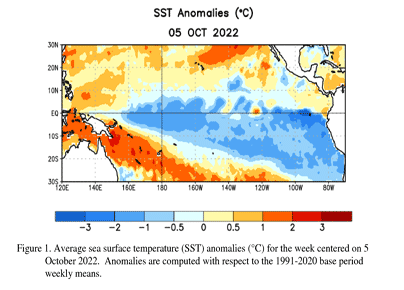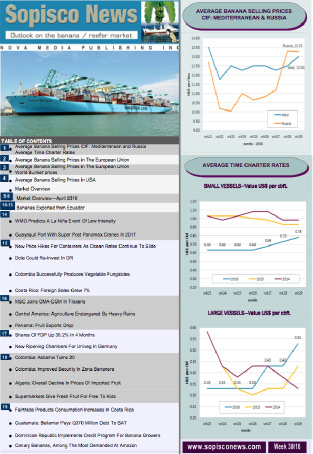75% Chance of La Niña During December-February 2022-23
2022-10-14

According to the National Oceanic and Atmospheric Administration (NOAA), below-average sea surface temperatures (SSTs) continued across the central and eastern equatorial Pacific Ocean during September. Most Niño indices decreased during the past month, with the latest weekly index values spanning -0.8ºC to -1.6ºC. Negative subsurface temperature anomalies mainly remained unchanged for the last couple of months, reflecting the persistence of below-average temperatures across the eastern Pacific Ocean. Low-level easterly and upper-level westerly wind anomalies prevailed across most equatorial Pacific. Convection was suppressed over the western and central tropical Pacific and was enhanced over Indonesia. Overall, the coupled ocean-atmosphere system continued to reflect La Niña.
The most recent IRI plume forecast of the Niño-3.4 SST index indicates La Niña will persist into the Northern Hemisphere winter 2022-23 and then transition to ENSO-neutral in January-March 2023. The forecaster consensus for this month favours a slightly later transition to ENSO-neutral during February-April 2023, which is consistent with the latest North American Multi-Model Ensemble (NMME). However, predicting the timing of changes is challenging, and there continues to be uncertainty over how long La Niña may last. In summary, there is a 75% chance of La Niña during the Northern Hemisphere winter (December-February) 2022-23, with a 54% chance for ENSO-neutral in February-April 2023.









